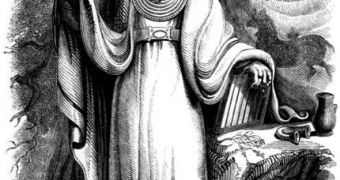Ancient Roman legends have it that Celtic druids were not the knights in shining armor everyone thought they were, and that they were actually blood-thirsty mystics, with an appetite for human sacrifices. At the time the old legends were discovered, however, the world had already formed an opinion of the wizards, and the Roman texts went largely unnoticed. Now, according to new archaeological digs, it would appear that the stories were right, and that the druids were, indeed, involved in ritual human sacrifice, as well as in potential acts of cannibalism.
The Celts “believe that the gods delight in the slaughter of prisoners and criminals, and when the supply of captives runs short, they sacrifice even the innocent,” Julius Caesar, the Roman emperor who led the first invasion of Britain, in 55 AD, wrote in his journal.
The soldiers that returned from that campaign brought back with them terrible stories about the high-ranking priests and their atrocities. Some accounts had it that the druids even engaged in acts of cannibalism against their victims.
One of the most compelling pieces of evidence of such an act is the 2,000-year-old mummified body of Lindow Man, most probably a Druid nobleman, who was killed around mid-first century. The forensic analysis of the body has established that he was hit in the head with a club twice, then strangled with a rope, and then cut around the neck with a ceremonial dagger. His sacrifice is believed to have been made for the Celtic gods, so that they would stop the Roman advance on the island of Great Britain.
“You've got a rope tightened round his neck, and at the moment where the neck was constricted, the throat was cut, which would cause an enormous fountain of blood to rise up. Something had to be done to stop [the Romans] in their tracks. And what better way than sacrificing a high-status nobleman?” Cardiff University in Wales archaeologist Miranda Aldhouse-Green, who is an expert in druid-related issues, tells in a new National Geographic documentary.
In another find, 150 skeletons have been discovered in a cave in Alveston, England, dating back to roughly the same period of Lindow Man. Archaeologists suspect that the killings were religious in nature, and say that all of the victims were murdered by a fatal blow to the head, which split the skull in two and destroyed the brain. What some uphold is that evidence of cannibalism can be found on one of the bones recovered from the cave, which has a crack in it that is very similar to the one modern humans make in animal bones they eat in order to suck out the marrow.

 14 DAY TRIAL //
14 DAY TRIAL //